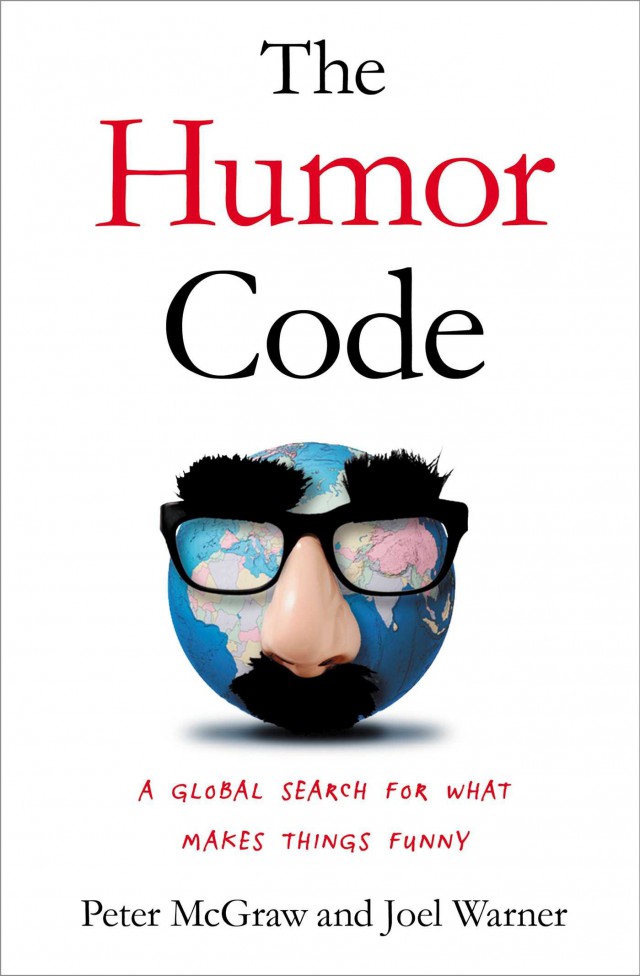
For their book, The Humor Code, journalist Joel Warner and University of Colorado Boulder Professor Peter McGraw spent a year travelling the world in search of funny. They searched Africa for its infamous laughing disease, strolled through the South American jungle dressed as clowns with Patch Adams, and even braved a Denver standup comedy open mic whilst wearing a sweatervest. And a whole lot more.
But the duo were not just in search of comedy itself, they were doing research on McGraw’s theory of why things are funny, something he calls the “benign violation” theory, simply described as “the idea that humor arises when something seems wrong or threatening, but is simultaneously OK or safe.”
It was McGraw’s quest, and the book’s narrative, to prove the theory enough through the research to polish his standup routine.
Warner and McGraw will be speaking about their book and McGraw’s theory at the Boulder Book Store on Tuesday, Sept. 16, along with Denver comics Kristin Rand and Troy Walker. To give an idea of what to expect, Boulder Weekly sent the authors links to a couple famous comedy bits on YouTube and asked them to dissect the funny using the benign violation theory.
Their answers are below.
Who’s On First, by Abbott and Costello
Bud Abbott and Lou Costello have a discussion about the lineup for a baseball team in which the player’s names are all questions, leading Abbott to grow more frustrated as he continuously asks “who is on first,” to which Costello says, “exactly.”
In the “Who’s On First” bit, what’s wrong is very clear: Abbott and Costello are having a six-minute argument. But what makes the conflict OK for the audience is that we’re in on the joke — we understand that “who,” “what,” and “I don’t know” are also the names of the ballplayers. So to us, Costello’s answers to Abbott’s questions are both wrong (Abbott doesn’t think he’s getting the information he’s looking for) and not wrong (he actually is getting the info he’s looking for; he just doesn’t realize it). If we didn’t understand the dual meaning of terms “who” and “what” in the bit, nothing about the conversation would be OK — it would all just be frustrating and confusing gobbledygook.
Plus, as [McGraw] likes to point out, famous bits like this help poke holes in one of the other major humor theories — incongruity theory, the idea that unexpectedness leads to comedy. Nothing about “Who’s on First” was unexpected to us — we’re both very familiar with the bit — but that didn’t stop [McGraw] from guffawing like a madman while watching it.
The Death Star Canteen, by Eddie Izzard While trying to get his lunch in the Death Star, Darth Vader has an argument with a low-level cafeteria worker who doesn’t know who Darth Vader is.
So, let’s stick with this “wrong yet OK” concept. On one hand, what’s happening to Darth Vader in Eddie Izzard’s routine is clearly wrong. Vader is the master of the dark side of the Force, the right hand of the Sith emperor, the cold, black evil at the heart of the Galactic Empire. You don’t tell him to get a cafeteria tray or cut him in line.
On the other hand, the situation does kind of make sense. A place like the Death Star is going to have a drab cafeteria filled with peons who’ve never met upper management and are just trying to do their jobs and get through their day, thank you very much. It wouldn’t be funny if the story simply involved some random galactic denizen yelling at Darth Vader — that would just be stupid. But we all recognize and understand the world of dreary corporate cafeterias, so these slights against Vader, however absurd, follow certain rules that make them logically okay.
There’s lots of humor to be found in concepts like this — having fantastic individuals face the familiar, humdrum ups and downs of daily life. It reminds [Warner] of one of his favorite comedy routines: Bill Cosby’s “Noah” bit, in which Noah hears the voice of God and thinks he’s on Candid Camera.
Respond: [email protected]














